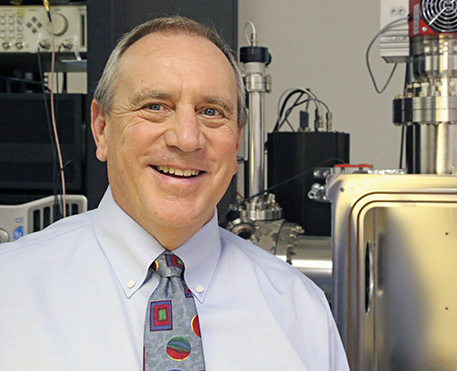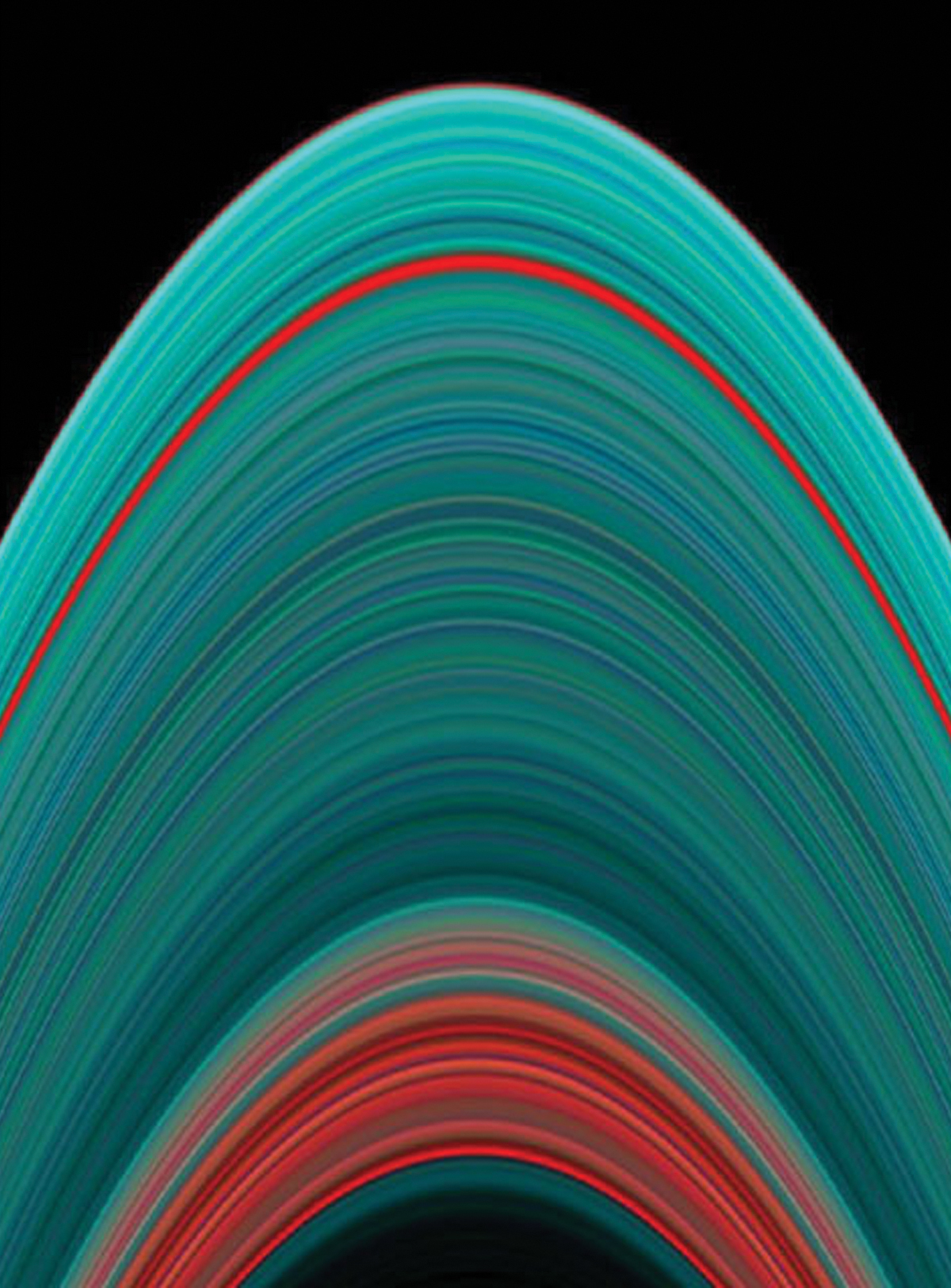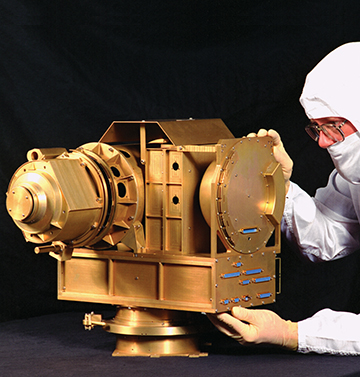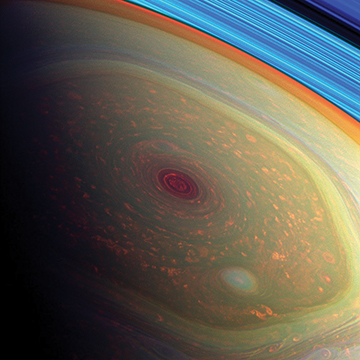In 2017, after almost 20 years in space, NASA’s Cassini spacecraft began the final chapter of a remarkable story of exploration of the Saturn system.
The Cassini spacecraft — named after the 17th-century astronomer Giovanni Cassini — launched from the Kennedy Space Center at Cape Canaveral, Florida, in October 1997. At that time, Google didn’t exist and the first Harry Potter novel had not yet been published in the United States. The spacecraft arrived at Saturn in 2004. It completed its original prime mission in 2008, and then the mission was extended twice.
In April 2017, Cassini began its Grand Finale, completing a daring set of orbits around the gas giant. Following a close flyby of Saturn’s largest moon, Titan, Cassini dived inside the planet’s icy rings and explored the region between the planet and its innermost ring.
Then, on its final orbit, Cassini took its final plunge into Saturn’s atmosphere, sending back new and unique science to the very end. The Southwest Research Institute-led Ion Neutral Mass Spectrometer (INMS) was one of the last instruments standing, sending atmospheric data back to Earth as the spacecraft penetrated the gas giant’s outer cloud layers and ultimately burned up like a meteor.

ABOUT THE AUTHOR
J. Hunter Waite Ph.D. is a specialist in mass spectrometry applications to study solar system evolution and astrobiology. In addition to leading the two Cassini instruments, he is principal investigator of the Mass Spectrometer for Planetary Exploration (MASPEX) instrument selected for NASA’s Europa Clipper mission, which is scheduled to launch in the 2020s.
BIRTH OF A MISSION
In the late 1980s, Dave Young, Ph.D., and I joined SwRI’s relatively young space science and engineering program. Soon thereafter, an opportunity arose to take part in NASA’s Cassini-Huygens mission to Saturn. A flagship-class, joint NASA- ESA-ASI (Italian Space Agency) robotic spacecraft, Cassini was the fourth space probe to visit the ringed planet and the first to enter orbit. ESA’s Huygens probe, which traveled to Saturn onboard the Cassini spacecraft, was designed to travel through the atmosphere and crash-land on the surface of Saturn’s moon, Titan, shortly after arrival.
Dave, who is now retired, had gained considerable experience with ion mass spectrometers associated with planetary and Earth-based missions while at the University of Bern and Los Alamos National Laboratory. Although I was a relative newcomer to space science, I did have some experience in ion mass spectrometry from my time at NASA’s Marshall Space Flight Center. Together, we assembled the Cassini Plasma Spectrometer (CAPS) team of some 25 co-investigators from eight countries. Meanwhile, I also worked on an ion neutral mass spectrometer proposal team.
The CAPS team put together a winning proposal, but NASA did not select a neutral mass spectrometer team initially. Instead, the agency decided that the Gas Chromatograph Mass Spectrometer (GCMS) from ESA’s Huygens lander should serve as the basis for a similar instrument for the orbiter’s payload.
I led a subsequent proposal to modify the GCMS design for the Cassini orbiter. We were fortunate to win that competition and form Cassini’s Ion Neutral Mass Spectrometer team in 1992.

Adorned with thousands of beautiful ringlets, Saturn is sometimes called the jewel of the solar system. Saturn is the second largest planet orbiting our sun. While not the only planet to have rings made of chunks of ice and rock, none are as spectacular or as complicated as Saturn’s. Like fellow gas giant Jupiter, Saturn is a massive ball of mostly hydrogen and helium.
Surrounded by more than 50 moons, Saturn is home to some of the most fascinating landscapes in our solar system. From the jets of Enceladus to the methane lakes on smoggy Titan, the Saturn system remains a rich source of scientific discovery.
In the ultraviolet image of Saturn’s rings below, the bluer an area appears, the richer it is in water ice. Conversely, the redder an area appears, the richer it is in “dirt.” This Cassini data reveals that the inner rings are more tenuous and dustier while the outer rings are denser and icier, providing hints about the origin and evolution of the ring system. The thin red band in the otherwise blue outer ring is known as the Encke Gap.
PAYLOAD DEVELOPMENT
The early to mid-‘90s was a time of instrument development for the Cassini mission. The orbiter’s 12 instruments were designed to image, survey, sniff, analyze, and scrutinize the Saturn system. As is always the case with space missions, the science instruments faced myriad challenges to be overcome.
CAPS, by itself, was a complex instrument, consisting of three separate sensors built in eight different countries. It was designed to sample ions and electrons
in a variety of regions around Saturn. Scientists would use the data to learn about the composition, density, flow velocity, and temperature of ions and electrons in Saturn’s huge magnetosphere. By measuring the composition of the ions, CAPS helps determine the sources of plasma in the magnetosphere.
INMS’s role was to detect low-energy “thermal” ions as well as neutral particles such as atoms and molecules. INMS “sniffed” Saturn and its moons Titan and Enceladus to learn more about their atmospheres. The instrument also characterized the environments around Saturn’s rings and icy moons. Because GCMS was designed to operate for two hours on Titan’s surface, the INMS team needed to adapt the design for long-term orbital operations and add an ambient ion mass spectrometer.
The CAPS and INMS challenges were met, along with those of the rest of the science payload, and they were integrated into the 22-by-4-foot spacecraft for a dramatic nighttime launch onboard a Titan/IVB/Centaur rocket. The seven-year cruise to Saturn was an equally challenging time. To keep costs in scope, the spacecraft and instrumentation were launched with a minimum of flight software loaded. A tremendous amount of work was required during cruise to ready the spacecraft and its instruments for the science mission.

With giant Saturn hanging in the blackness and sheltering Cassini from the sun’s blinding glare, the spacecraft viewed the rings as never before, revealing previously unknown faint rings and even glimpsing its home world. This panoramic view was created by combining a total of 165 images taken by the Cassini wide-angle camera.
LORD OF THE RINGS
To get into orbit around Saturn, Cassini-Huygens fired its rockets over the ring plane to reduce its speed. The team met the Saturn Orbital Insertion challenge on July 4, 2004, and Cassini began its 13-year residence among the largest ring system in the solar system. Both instruments got off to a great start, discovering unexpected complexity in the atmosphere and ionosphere associated with the rings. In the first months, CAPS and INMS had a ringside seat to survey both Saturn’s magnetosphere and Titan’s upper atmosphere as the orbiter successfully delivered the Huygens probe to Titan’s surface.
TITANIC DISCOVERIES
CAPS and INMS were the heart of the in situ composition investigation to explore the upper atmosphere and ionosphere of Titan and its interaction with Saturn’s vast magnetosphere. CAPS and INMS then discovered that chemistry creating Titan’s organic aerosol shroud takes place largely in the upper atmosphere. This work was published in a joint CAPS/INMS paper in Science (Waite et al., 2007) and set the stage for the surface imaging that followed. The surprise was that Titan’s frigid surface included liquid lakes of methane/ethane and large dune fields made of organic compounds. We learned Titan’s surface contains more than 100 times the coal, gas, and oil reserves of Earth. While on Earth, fossil fuel reserves are largely bio-derived from ancient marine life, but Titan’s hydrocarbons are produced by neutral-ion chemistry, not from living organisms.
CAPS made the crucial observations to clinch the discovery of the organic process. It sensed large charged ions, which play an important role in the formation of aerosols in the moon’s upper atmosphere. The complex organics created ultimately end up on Titan’s surface.
Another highlight of the mission was the serendipitous discovery of the cryo-geysers emanating from Enceladus’ South Pole. Early in the mission, Cassini’s MAGnetometer (MAG) sensed a curious disturbance in the magnetic field near the icy moon. To investigate, scientists adjusted an upcoming flyby to pass close to the moon.
INMS discovered water plumes spewing from cracks in the southern region of the moon. The plumes contain small amounts of carbon dioxide, ammonia, methane, and organic compounds. CAPS found negatively charged water ions that had formed from the condensing vapor. These ions slowed the plasma flowing by Enceladus to a near standstill, which explained the magnetic field disturbance. This discovery was published in a special issue of Science in 2006.
By sheer luck, INMS had been designed with the ability to measure the deuterium/hydrogen (D/H) ratio in the water vapor. The D/H ratio in water is related to the formation history of planetary bodies, including comets and the solar system as a whole. The D/H ratio of the water from Enceladus is more like that of comets than the D/H ratio associated with Saturn. That means Enceladus likely formed outside the Saturn system and was captured from the interplanetary or protosolar disc sometime in the solar system formation process.

SwRI operated two of Cassini’s 12 science instruments, as part of the fields, particles, and waves experiment package. The Cassini Plasma Spectrometer (CAPS), left, and the Ion and Neutral Mass Spectrometer (INMS), right, both studied plasma in the Saturn system. While they didn’t produce actual “pictures,” the information they collected is critical to scientists’ understanding of the Saturn system, including its moons and rings.

HABITABLE REAL ESTATE
All this was just the prelude to a fabulous story of uncovering the habitability of an interior ocean at Enceladus. Ice grain measurements in the plume, taken by Cassini’s Cosmic Dust Analyzer (CDA), demonstrated the presence of salts from an interior sea under the ice. Extensive heavy organics were inferred by both INMS and CDA measurements.
Gravity and imaging measurements confirmed interior water exists below the icy surface of Enceladus. The key to this finding was the detection of libration, which is an oscillating motion of the moon’s icy crust relative to its core. Libration observations confirmed Enceladus’ subsurface ocean is global. As a result of these scientific findings, the evidence was mounting for habitability — a large and stable source of liquid water, organic compounds, and the elements of life, such as carbon, hydrogen, oxygen, nitrogen, phosphorus, and sulfur.
The final piece of evidence was acquired by INMS on Oct. 15, 2015, and published in Science in April 2017. INMS identified molecular hydrogen in the plume. Its relationship to the carbon monoxide and methane also found in the plume suggests Enceladus’ ocean floor could include features analogous to hydrothermal vents on Earth, which are known to support life on the seafloor. The evidence of molecular hydrogen arising from hydrothermal vents is reinforced by CDA’s observation of silica nanoparticles in the icy grains from the plume.
Hydrogen is a source of chemical energy for microbes that live in the Earth’s oceans near hydrothermal vents. On the Earth’s ocean floor, hydrothermal vents emit warm, hydrogen-rich fluid, allowing unique ecosystems teeming with unusual creatures to thrive. Microbes that convert this mixture into metabolic energy make these ecosystems possible. INMS results indicate the same chemical energy source is present in the ocean of Enceladus. We have not found direct evidence of the presence of microbial life. However, the discovery of molecular hydrogen and the evidence for ongoing hydrothermal activity is a tantalizing suggestion that habitable conditions could exist in the ocean beneath the moon’s icy crust.

Left: This spectacular, false-color image highlights the storms at Saturn’s north pole. The eye of a hurricane-like storm appears dark red while the fast-moving hexagonal jet stream is a yellowish green. The rings of Saturn appear in vivid blue at the top right.
Right: Jets of ice and salty water spew from cracks in Enceladus’ south pole. When mission scientists flew the spacecraft through these plumes, INMS sniffed out, among other things, molecular hydrogen, providing a tantalizing hint that life could possibly exist in the ocean beneath the moon’s icy surface.

GRAND FINALE
DETAILS
Planetary protection is a guiding principle in the design of interplanetary missions. The policy aims to prevent biological contamination of celestial targets as well as the Earth, when samples are being returned. Planetary protection acknowledges the unknown nature of the space environment and the scientific community’s desire to preserve the pristine nature of celestial bodies so they can be studied in detail.
So, with these two pivotal scientific findings and a host of other absolutely amazing results, Cassini was ready to begin its final chapter — the Grand Finale.
Cassini was running out of fuel, so the Grand Finale was designed to dispose of the spacecraft in a fiery entry into Saturn’s atmosphere. Otherwise, the spacecraft, once depleted of fuel, would wander uncontrolled within the Saturn system — a serious breach of planetary protection protocols. This dramatic end removed any chance that Cassini might accidentally strike Enceladus or Titan, which could contaminate these interesting worlds.
The first step was to get the spacecraft into a high-latitude orbit, grazing the outer edge of Saturn’s outer F ring. The spacecraft then used additional gravity assists from Titan flybys to jump inside the inner edge of the D ring — the ring closest to the planet. Cassini then passed through the rings 22 times, allowing MAG to measure the rings’ mysterious spin-aligned magnetic field. These data will provide insight into the origin and interior of Saturn.
Furthermore, we measured the perturbations on the Cassini spacecraft as it passed near Saturn, sensing the Doppler shift in the radio signal back to Earth, hoping to ascertain if Saturn has a solid core. This science is similar to the measurements the Juno spacecraft is collecting simultaneously at Jupiter, allowing scientists to compare the interiors of the two gas giants in our solar system.
These proximal orbits also put Cassini in position to orbit at varying distances between Saturn and the inner edge of the D ring. This allowed INMS to sample the ring atmosphere and Saturn’s atmosphere to understand the interaction between the rings and the planet. This phenomenon, known as “ring rain,” had already been detected by ground-based infrared observations. However, the INMS measurements were — perhaps to no one’s surprise — nothing like what we expected. The rain appears to be composed of methane and heavier organic particles raining down from the rings, mixed with some water and possibly carbon monoxide, perhaps a remnant of a past encounter between a comet and Saturn’s rings. Stay tuned for that story, which is still evolving.
On the morning of Sept. 15, 2017, Saturn took its final plunge. The spacecraft lost radio contact with Earth within minutes after beginning its descent into Saturn’s upper atmosphere. On the way down, INMS was the prime instrument collecting data during that final voyage into Saturn’s atmosphere. INMS directly sampled the atmosphere’s composition to provide insight about the giant planet’s formation and evolution. Real-time data were transmitted until the atmospheric torque on Cassini’s 10-meter magnetometer boom turned the antenna away from Earth. When that happened, it lost its connection to the Deep Space Network and all went silent. Seconds later, it disintegrated in Saturn’s atmosphere.
Silenced, but not forgotten, Cassini lives on in the imaginations of its science team, and in the massive amounts of data they will be combing through for years to come. We anticipate that Cassini will inspire the next generation of scientists to plan a return mission to understand the profound mysteries of Saturn’s moons and seek signs of extraterrestrial microbial life in the ocean of Enceladus.

This image is one of Cassini’s last looks at Saturn and its main rings from a distance. The 13-year mission provided long-term observations of the variability of the planet and its moons, rings, and magnetosphere.
Questions about this article? Contact Hunter Waite or call +1 210 522 2034.

